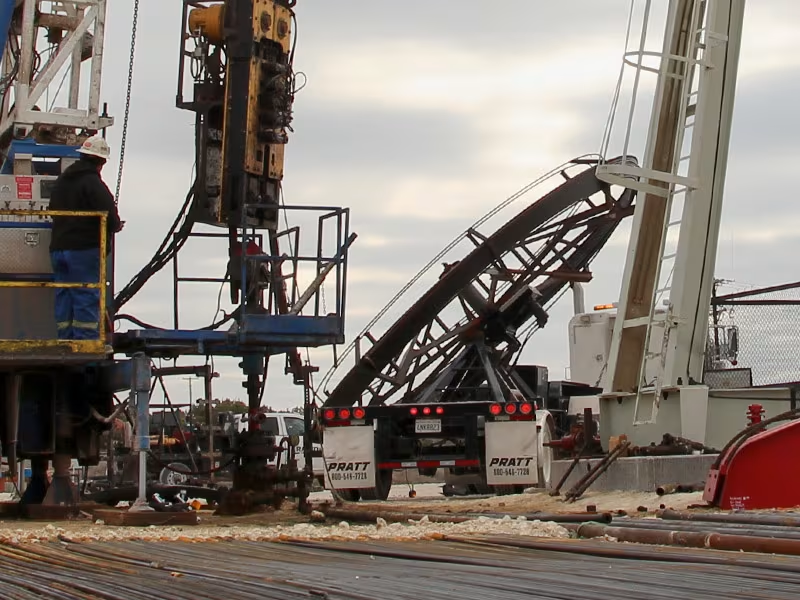Most sucker rod strings failures are related to the couplings. The failures are caused by improper handling, improper makeup of the connections, and the unavoidable loading of the coupling against the tubing wall. Even when strict procedures are followed to avoid damage during handling and reduce over/under torquing of the couplings, the coupling area is still susceptible to failure. Deviated wells cause horizontal loading of the rods against the inside of the tubing wall and create frictional wear between the rod and the tubing. The frictional wear is amplified by the shape of the couplings because their diameter is much larger that the diameter of the rod. Traditionally, the entire side load of the well is rested on the small coupling area, but continuous rod allows this force to be distributed across the entire string.
Increasing the Mean Time Between Failures (MTBF)LightningRod™ continuous rod eliminates all the couplings along the entire wellbore except for the top connection to the polished rod and the bottom connection the pump itself. By eliminating the couplings along the wellbore, the pressure points between the rods and the tubing are minimized by spreading the pressure along a longer contact area of the rod and tubing. The result is longer run lives of both the rods and the tubing which inherently increased the MTBF.

Every well is different. That is why Lightning Rod and Pipe provides three different types of material for its continuous rod. Each type of material goes through the same rigorous quality control procedures, so you can be sure you are getting the highest quality rods for each of your wells regardless of its characteristics. The H series is used when for higher tensile or torque strength is required and is available in the 41 and 43 series.
For wells with higher levels of corrosives, the LightningRod D43N and H43N provide the highest level of protection by using a combination of Chromium, Molybdenum, and Nickel. The Nickel adds toughness, which increases the metal's resistance to corrosion. Especially in areas where CO₂ and H₂S are the primary sources of corrosion and where chemical inhibitors are used.
The D41M and H41M rods contain significant amounts of Chromium and Molybdenum which work together to resist the corrosive effects of H₂S and CO₂. This metal blend works best in mildly corrosive wells that are chemically treated.
The LightningRod D15 continuous rod provides a strong consistent rod for wells that are minimally corrosive. This rod does not contain significant alloying elements for corrosion protection and is predominantly in shallow heavy-oil wells.
| Physical Properties – Quenched & Tempered | ||||||
|---|---|---|---|---|---|---|
| D Grade | High Strength | |||||
| LightningRod™ Type | D43N | D41M | D15M | H43N | H41M | |
| Material (AISI) | 4318 | 4119 | 1536 | 4318 | 4119 | |
| Tensile (ksi min.) | 125 | 120 | 120 | 145 | 140 | |
| Yield (ksi min.) | 100 | 95 | 95 | 120 | 115 | |
| Hardness (Rc) | 28-32 | 22-28 | 22-28 | 32-36 | 32-36 | |
| Specifications | ||||||
|---|---|---|---|---|---|---|
| Rod Size | Weight (lb/ft) | Maximum Service Torque (ft-lb) | ||||
| 1-1/8” | 3.38 | 1550 | 1535 | 1445 | 1900 | 1900 |
| 1” | 2.67 | 1110 | 1100 | 1015 | 1350 | 1350 |
| 15/16” | 2.35 | 900 | N/A | N/A | 1100 | N/A |
| 7/8” | 2.07 | 750 | 735 | 680 | 900 | 900 |
| 3/4” | 1.49 | 535 | 525 | 500 | 670 | 670 |

Eliminates connections, the weakest links in a traditional sucker rod system
Distributes side loading over the entire length of the string
Reduces turbulent flow around the couplings and guides
Lowers the coefficient of friction between the rod and tubing string
Decreases system ownership cost over the life of the well